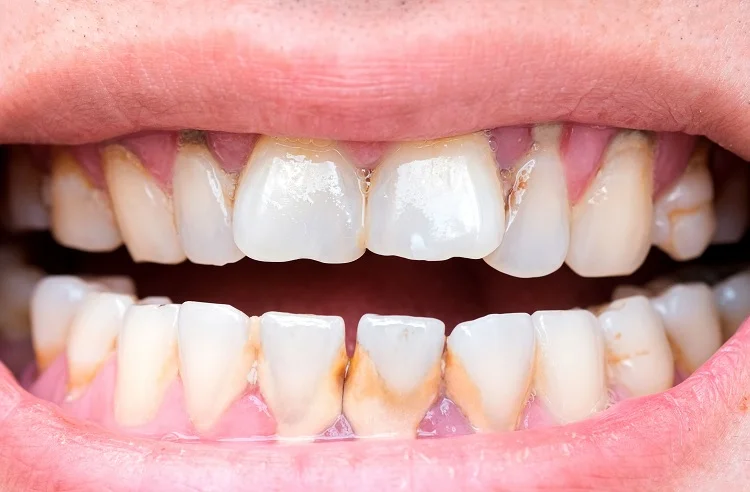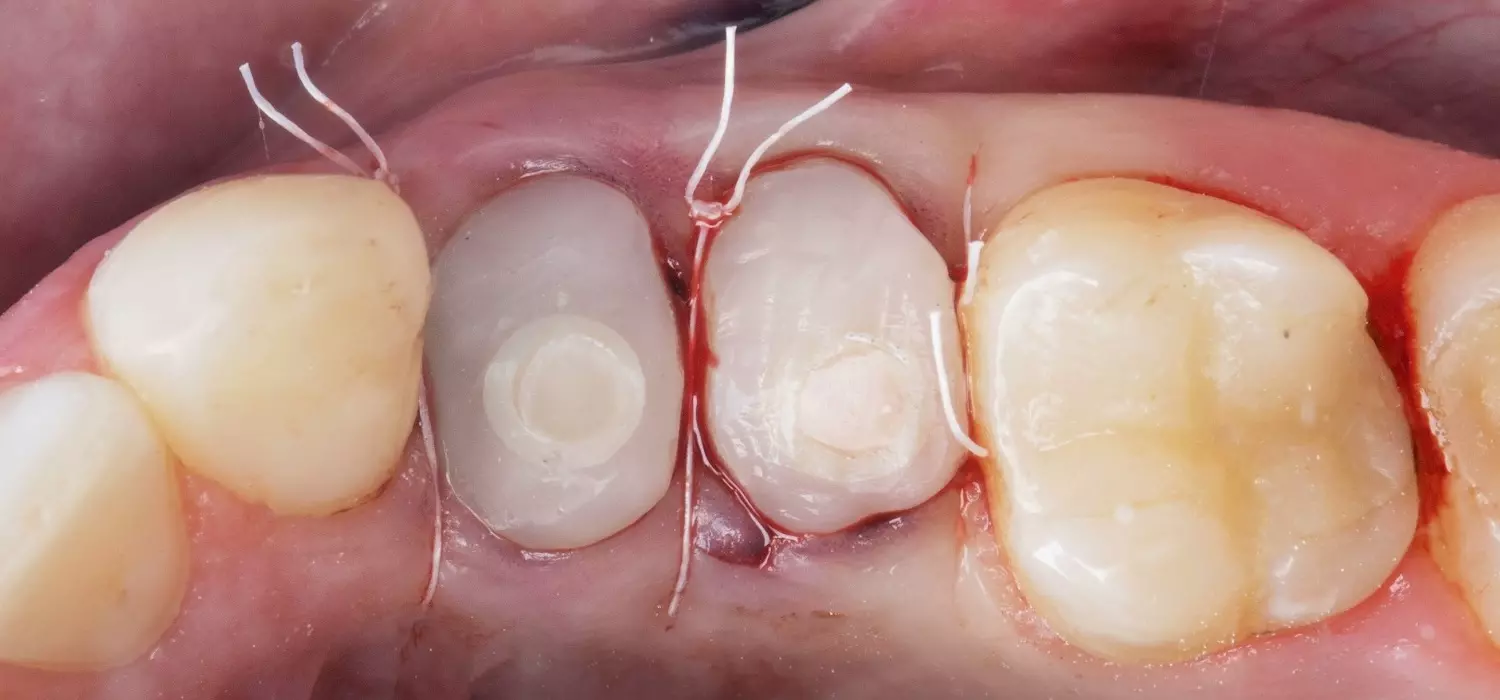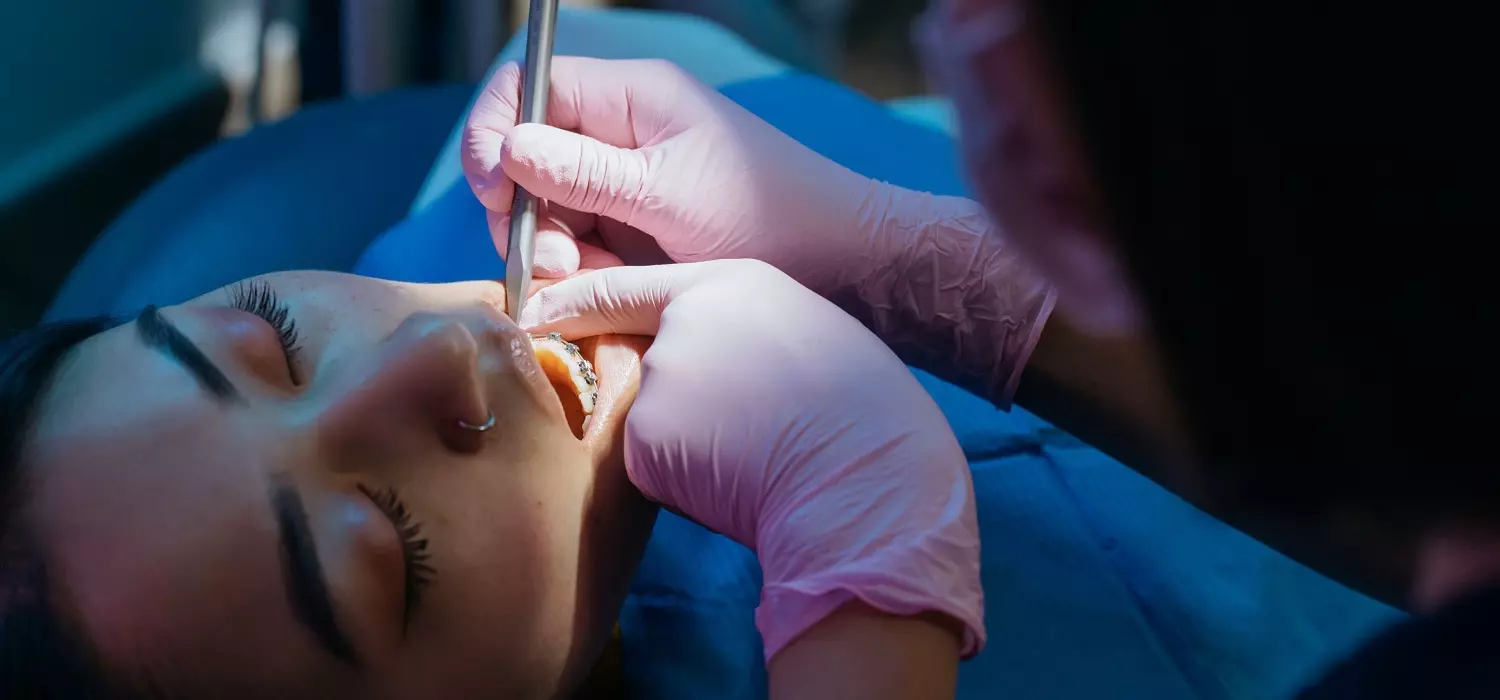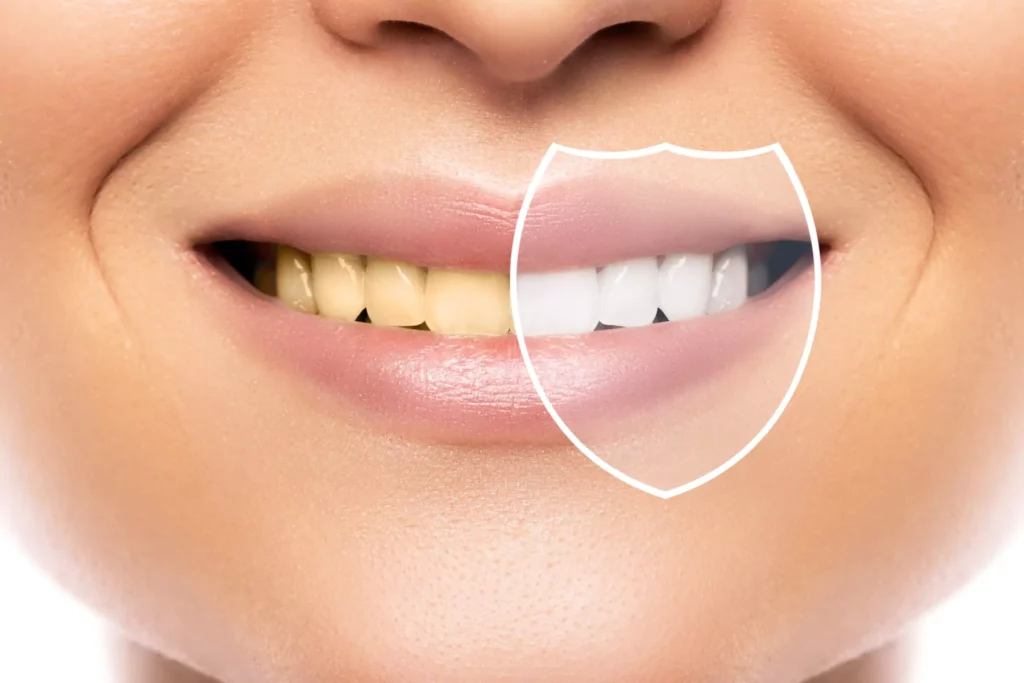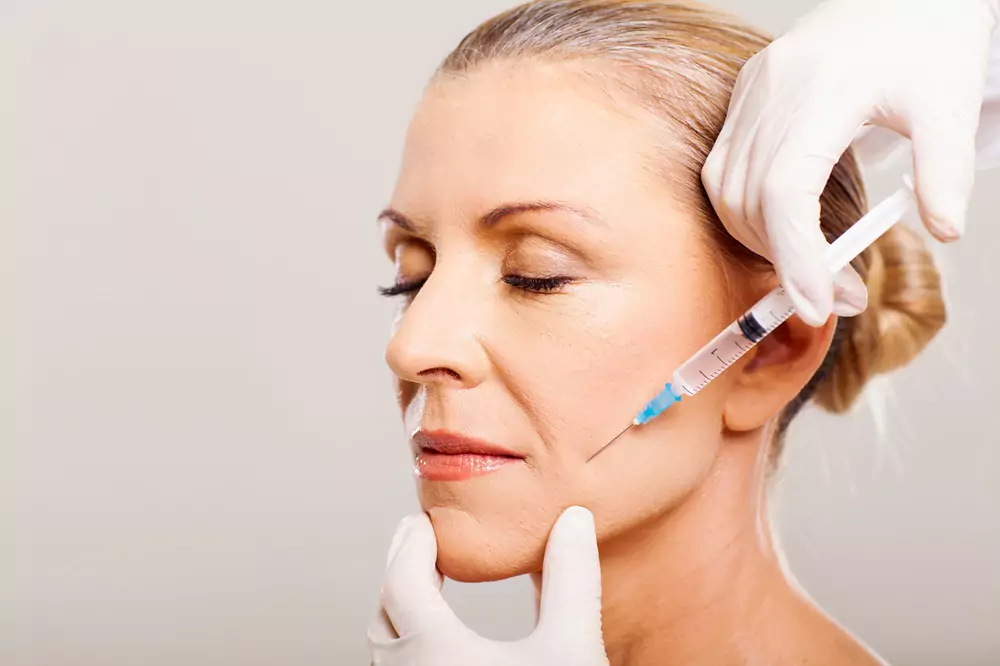Exposed dentin is a common dental problem that affects many people around the world. In this article, you will learn about the causes, symptoms, treatment options, and prevention of this condition.
Teeth are composed of several layers, the outermost and hardest layer is called enamel, an intermediate layer called dentin, and the innermost layer which is the nerve or dental pulp. Enamel is the most exposed layer which can lead to enamel erosion. If you want to learn about enamel erosion and how to prevent it, click here.
What is Exposed Dentin?
Dentin is the tissue that is immediately below the dental enamel. Its main functions include:
• Providing support to the enamel
• Transmitting nerve impulses from the enamel or root of the tooth to the pulp
• Determining the color of teeth
• Protecting the nerve from external trauma
It is not as hard as enamel and is composed of tubes with nerve endings that extend to the dental pulp, which is why when enamel is lost and dentin is exposed, there is an increase in tooth sensitivity. The pulp is the nerve of the tooth, and it detects all stimuli as pain.
What are the Common Causes?
There are many reasons why dentin can be exposed, some of the most common include:
1. Bruxism
It is a sleep-related disorder in which a person clenches and grinds their teeth while sleeping. When bruxism is intense and frequent, it can cause serious damage to the teeth, wear and/or fracture the enamel, expose the dentin, and generate dental sensitivity. Epilepsy is one of the causes of bruxism. Read this article about bruxism and epilepsy to understand more of their connection.
2. Aggressive brushing
Many people believe that the harder they brush their teeth, the cleaner they get, but this is a mistake. Brushing aggressively can cause serious damage to the enamel and expose the dentin. The same thing happens if you use a hard-bristled toothbrush or very abrasive toothpaste.
3. Gum recession
The gum tissue can become inflamed and recede, leaving part of the tooth root exposed. The dentin in that area is very sensitive. Gingival recession can occur due to inadequate dental brushing, buildup of tartar, people with very thin gums, among others.
4. Dental caries
It is the destruction of the tooth tissues that occurs when bacteria in the mouth produce acids that adhere to the enamel surface, creating holes in it. Initially, the cavity forms on the enamel, but over time it can reach the dentin, causing sensitivity and pain.
5. Enamel erosion
Consuming a high amount of acidic foods and beverages, suffering from gastric diseases such as reflux, or vomiting a lot can cause tooth enamel to wear away, exposing the dentin layer.
6. Dislodgement of restorations
Dental restorations are intended to replace missing enamel and dentin, when they fall out, they expose the dentin and the associated symptoms appear.
7. Dental fracture
There are dental fractures that compromise enamel and dentin, causing sensitivity. A tooth can fracture due to a blow, a fall, an extensive cavity, or excessive bruxism, among others.
8. Dental crowding
In many cases, the improper positioning of the teeth can generate occlusal trauma, and wear, or fracture of the teeth. We have a more extensive guide about dental crowding for you.
Signs and Symptoms of Exposed Dentin
Having exposed dentin generates symptoms related to sensitivity, aesthetics, and the strength of the affected teeth.
• Sensitivity: It is the main symptom of dentinal exposure. Very intense pain is felt in the affected tooth, located exactly in the area where the dentin is exposed; sensitivity responds to stimuli of cold, heat, sweet, and acid; also to contact, for example, with the toothbrush.
• Aesthetics: Dentin tends to be yellow; when the thickness of the enamel is lost, the color of the dentin is exposed; the teeth appear opaque and yellowed, affecting the aesthetics of the smile.
• Strength: The wear of the enamel and dentin makes the teeth become more fragile and fracture or crack more easily.
Treatment Options
Depending on how exposed the dentin is and the cause of this, there are different treatment options. The dentist may resort to one or several options depending on each case:
1. Use of gel, desensitizing toothpaste, or dentinal sealing with adhesive: The use of these products will help to decrease dental sensitivity to certain external stimuli. A little is placed in the area of the tooth where the discomfort is felt and left to act, the product will seal the entry of the tubes that go to the nerve, relieving sensitivity.
2. Restorations: The placement of resins, veneers, or crowns will provide the affected tooth with an extra layer of protection, helping it to be more resistant, and improve function, aesthetics, and sensitivity.
3. Neuromuscular Relaxation Plate: It is a device that is placed in cases of severe bruxism, it is for nighttime use, helps to protect the teeth and prevent them from continuing to wear; additionally, it keeps the jaw in an “ideal” position to decrease episodes of bruxism.
4. Periodontal surgery: Indicated in severe cases of dentinal exposure, specifically when the root of the tooth is uncovered, it consists of covering the affected area with a gum graft.
5. Orthodontics: Orthodontic treatment will help to reduce occlusal trauma and restore the normal function of the teeth in the oral cavity.
6. Root canal treatment: In extreme cases, when discomfort due to dentinal exposure does not decrease, it is necessary to perform a root canal treatment.
7. Referral: Depending on the origin of the exposed dentin, in some cases it is pertinent to refer the patient to nutrition, medicine, psychology, or physiotherapy, to treat the underlying problem and prevent the progression of this condition.
How to Prevent Exposed Dentin?
Learning how to brush your teeth and use appropriate tools, such as a soft or medium-bristled toothbrush and a low-abrasion toothpaste, will be of great help, not only to prevent sensitivity and tooth damage from worsening but also initially to prevent dentinal exposure.
Other ways to prevent dentinal exposure are:
• Avoid or reduce consumption of acidic foods or carbonated beverages.
• Reduce sugar consumption.
• Brush your teeth at least 2 times a day.
Remember to visit the dentist every 6 months, staying in regular checkups will be of great help so that a condition such as exposed dentin does not progress too much and is treated in time. Thank you for reading.
Frequently Asked Questions
What happens when dentin is exposed?
Dentin is not as hard as enamel and is composed of tubes with nerve endings that extend to the dental pulp, which is why when enamel is lost and dentin is exposed, there is an increase in tooth sensitivity. The pulp is the nerve of the tooth, and it detects all stimuli as pain.
Is a crown necessary if you have an exposed dentine?
If you have exposed dentin, it might be wise to explore the possibility of getting a dental crown as a treatment option, depending on the degree of exposure and the underlying cause. Exposed dentin can cause tooth sensitivity and heighten the risk of tooth decay and other dental problems.
How is a tooth dentin exposed?
There are many reasons why dentin can be exposed, some of the most common include: Bruxism, Aggressive brushing, Gum recession, Dental caries, Enamel erosion, Dislodgement of restorations, Dental fracture, Dental crowding.
Can exposed dentin be fixed?
Depending on how exposed the dentin is and the cause of this, there are different treatment options. The dentist may resort to one or several options depending on each case: Use of gel, desensitizing toothpaste or dentinal sealing with adhesive, Restorations, Neuromuscular Relaxation Plate, Periodontal surgery, Orthodontics, Root canal treatment, Referral.
How do I know if my dentin is exposed?
Having exposed dentin generates symptoms related to sensitivity, aesthetics, and the strength of the affected teeth.
Share:
References
1. Flury, S., Peutzfeldt, A., Schmidlin, P. R., & Lussi, A. (2017). Exposed Dentin: Influence of Cleaning Procedures and Simulated Pulpal Pressure on Bond Strength of a Universal Adhesive System. PLOS ONE, 12(1), e0169680. https://doi.org/10.1371/journal.pone.0169680
2. Goldberg, M., Kulkarni, A. B., Young, M. F., & Boskey, A. L. (2011). Dentin structure composition and mineralization. Frontiers in bioscience, E3(2), 711-735. https://doi.org/10.2741/e281
3. Gotter, A. (September 29, 2018). Why Are My Teeth So Sensitive? Healthline. https://www.healthline.com/health/sensitive-teeth
4. Mandal, A. (January 20, 2023). What is Dentin / Dentine? News-Medical.net. https://www.news-medical.net/health/What-is-Dentin-Dentine.aspx
5. Sensitive Teeth: Causes, Remedies & Treatments Available. (Reviewed: August 4, 2022). Cleveland Clinic. https://my.clevelandclinic.org/health/symptoms/10954-teeth-sensitivity
6. Vevers, S. (November 4, 2022). What to know about dentin hypersensitivity. https://www.medicalnewstoday.com/articles/dentin-hypersensitivity
7. Watson, S. (Updated: June 28, 2021). Dentin and the Layers of Your Teeth. Very well Health.
https://www.verywellhealth.com/dentin-definition-of-dentin-1059420
8. What Can You Do About Sensitive Teeth? (Reviewed: December 6, 2022). WebMD. https://www.webmd.com/oral-health/guide/tooth-sensitivity
-
Nayibe Cubillos M. [Author]
Pharmaceutical Chemestry |Pharmaceutical Process Management | Pharmaceutical Care | Pharmaceutical Services Audit | Pharmaceutical Services Process Consulting | Content Project Manager | SEO Knowledge | Content Writer | Leadership | Scrum Master
View all posts
A healthcare writer with a solid background in pharmaceutical chemistry and a thorough understanding of Colombian regulatory processes and comprehensive sector management, she has significant experience coordinating and leading multidisciplina...



